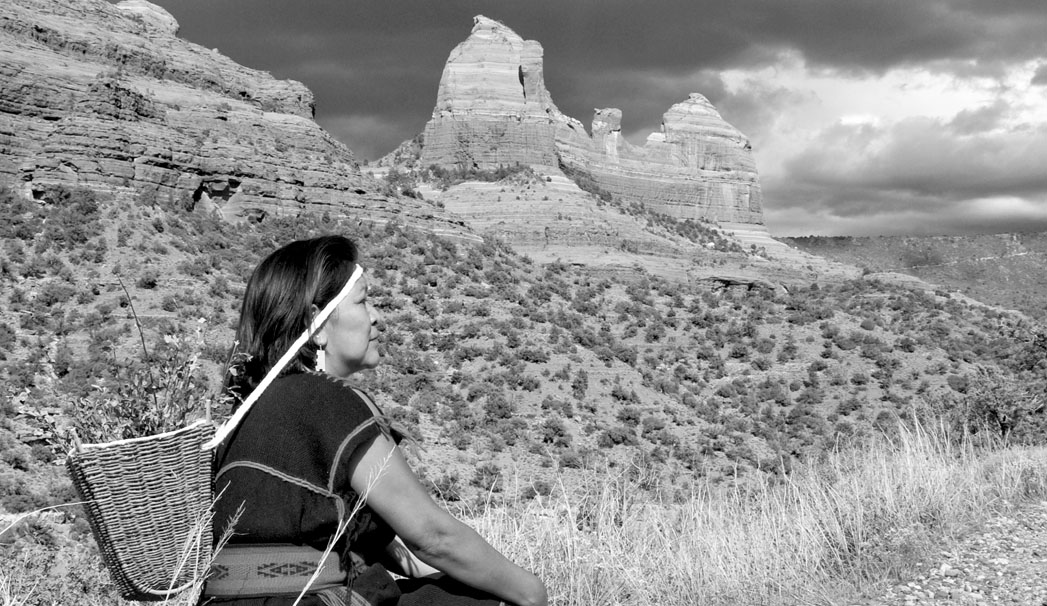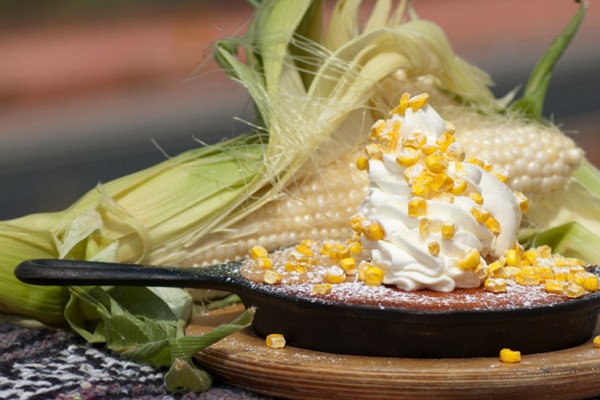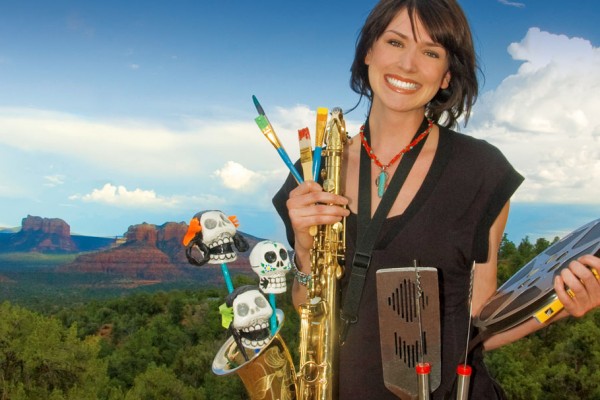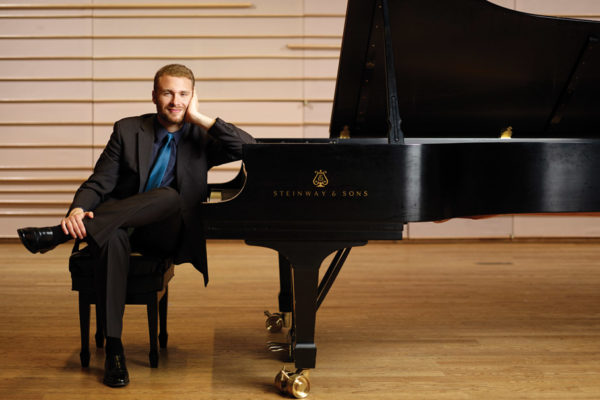Dorleen Gashweseoma Lalo: Basket Maker
Dorleen Gashweseoma Lalo did not learn to speak English until she met her husband, and for many years he acted as her interpreter as she traveled to museums and shows with her intricately woven baskets. Dorleen, a member of the Spider Woman Clan, has been making baskets from sumac, yucca and rabbit brush since she was 14, and she has lived in Hotevilla on Third Mesa her entire life. Her grandmother, Flora Gashweseoma, and her mother, Mina Gashweseoma, were both basket makers. (Her father, Martin Gashweseoma, is a Hopi elder who occasionally speaks in Sedona.) “We are all artists in my family – we were raised very traditionally,” says Dorleen. “I’ve tried many art forms, but not carving. My grandmother taught me that carving isn’t for ladies.”
Flora is still a major influence on Dorleen’s technique. A few years ago, Dorleen was invited to the Smithsonian Institute’s National Museum of the American Indian in Washington, D.C. There she found her grandmother’s baskets, including some she’d never seen. “It touched my heart,” she says, tears in her eyes. Dorleen, 46, says Flora still comes to her in dreams and gives her ideas for new designs. “I also pray to the creator and to Mother Earth to teach my heart to be more creative and bring me new designs,” she says. “The elders have been shocked by my designs – I’m creative for being so young. I’m the youngest woman in Hotevilla making baskets.”
There are basically three types of Hopi baskets: plaited, wicker and coiled. While Dorleen has dabbled in coiled basketry, she primarily sells her wicker designs. (Wicker baskets are the specialty of Third Mesa.) Hopi baskets were traditionally used for storage, but today they are primarily used in ceremonies, dances and weddings. When Dorleen first began weaving, she used baskets woven by her family members as models for her own designs and patterns, and she has even replicated older baskets she saw when visiting the Smithsonian. She says basket-weaving materials are becoming harder to find, and younger women are not as interested in learning the art form. (Dorleen has three granddaughters, and she’s excited about teaching them her techniques.) Because of that, she has been determined to bring baskets that aren’t produced as frequently into the public’s eye. These include burden baskets and piki trays.
Burden baskets have become Dorleen’s most popular shape; the baskets are used for harvesting crops. Piki trays are used to serve Hopi piki bread, a thin, light bread made from blue corn and culinary ash. Dorleen also weaves sifters; plaques; cradleboards; miniatures; rattles; purses; tea baskets with lids; and peach baskets, among other varieties. She harvests her own materials with the help of her husband and two sons who are both katsina carvers (many of her miniature baskets are used on her sons’ katsina dolls). Most of the harvesting takes place in August and September, and Dorleen does not harvest at all in July or December due to Hopi beliefs. She travels as far away as Sedona, Flagstaff and Payson to harvest her materials.
Dorleen uses herbs such as amaranth as well as tea, corn, prickly pears, clay and commercial dyes to create colorful designs on the baskets. During our conversation, she showed us designs featuring eagles, mudheads (clown figures in Pueblo cultures), water and storm patterns, pinwheels and sunflowers. “These aren’t just colors mixed together,” says Dorleen. “Each pattern means something.”




